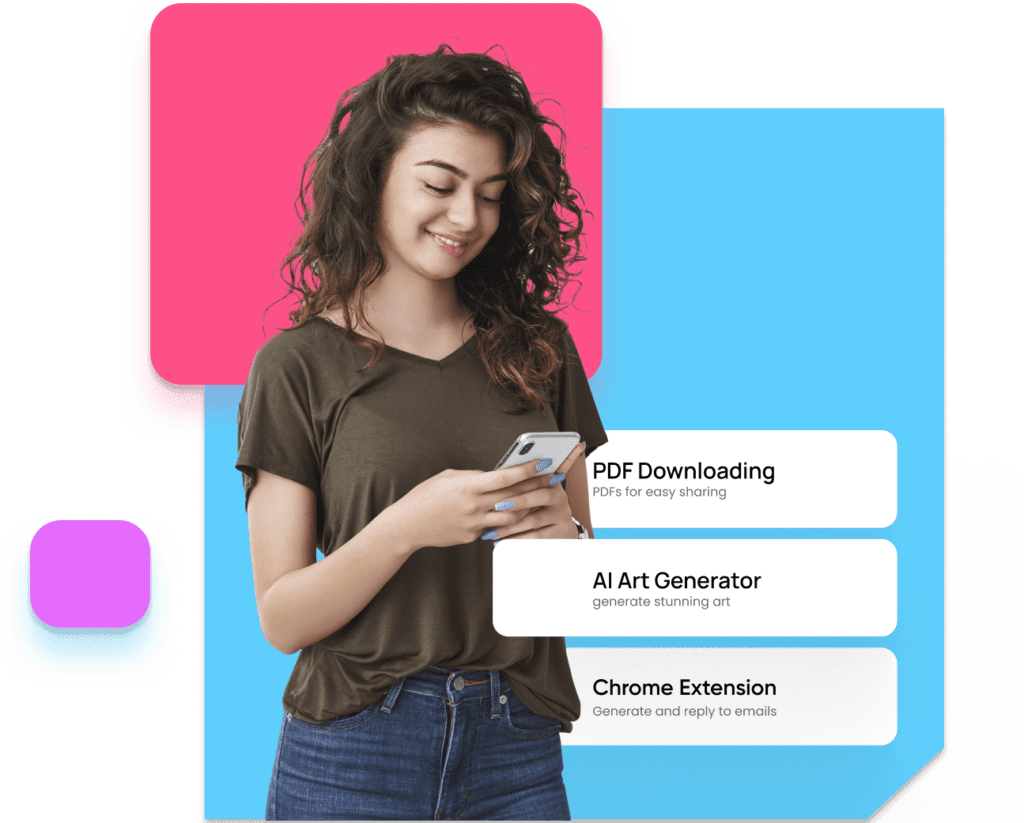The art of sharing stories and ideas is as old as humanity itself. However, the specific role of a “content creator,” as we understand it today, has changed over time but kept one thing constant: Humans. In the ever-evolving landscape of content creation, human content creators continue to play a pivotal role in shaping engaging and informative narratives across various platforms. Their expertise, creativity, and nuanced understanding of human emotions and experiences are instrumental in captivating audiences and driving meaningful engagement.
As the world of content creation is undergoing a significant transformation, the rise of Artificial Intelligence (AI) introduces new tools and possibilities. While the role of the traditional content writer remains crucial, AI technology offers an exciting and powerful assist. Let’s delve into the rich history of this profession:
The Early Days of Content Creation
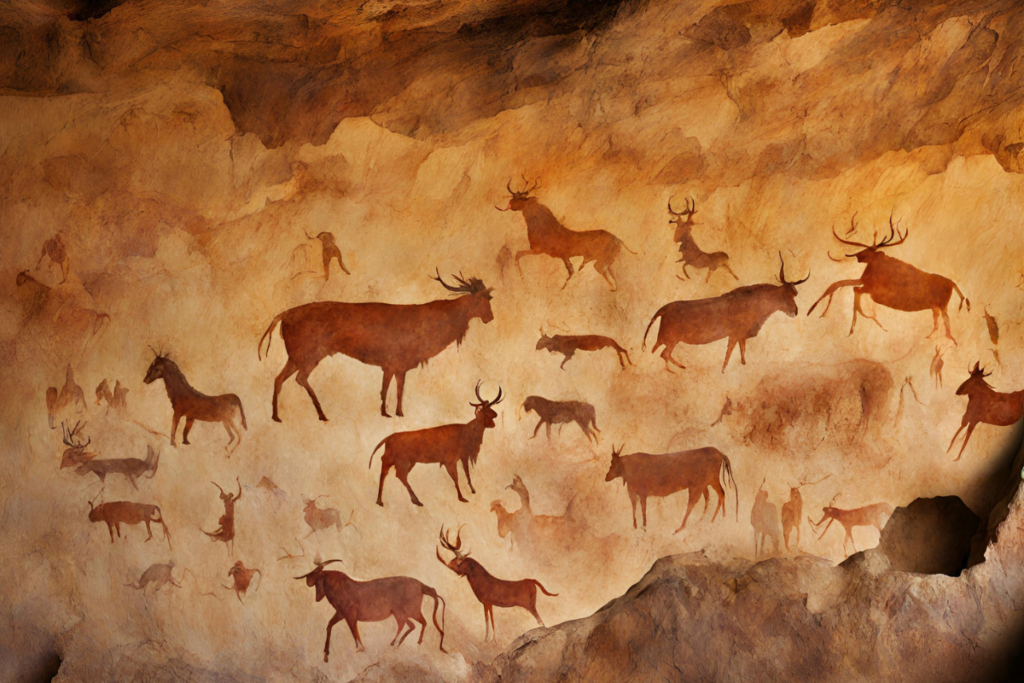
Our journey begins with our ancestors, who used cave paintings to narrate stories, depict daily life, and connect with future generations. Fast forward to ancient civilizations, where scribes meticulously documented history, religious texts, and philosophical ideas on clay tablets, papyrus scrolls, and parchment. The invention of the printing press in the 15th century marked a pivotal moment. It revolutionized content creation, enabling the mass production of books, pamphlets, and other printed materials, paving the way for a wider audience engagement.
The Rise of Professional Writers and the Birth of Modern Media
The 18th and 19th centuries saw the emergence of professional writers and journalists. Newspapers, magazines, and literary works flourished, fuelled by the growing literacy rates and the thirst for information. This period also witnessed the advent of photography and radio, introducing new avenues for content creation and dissemination.
A Content Explosion and the Democratization of Creation
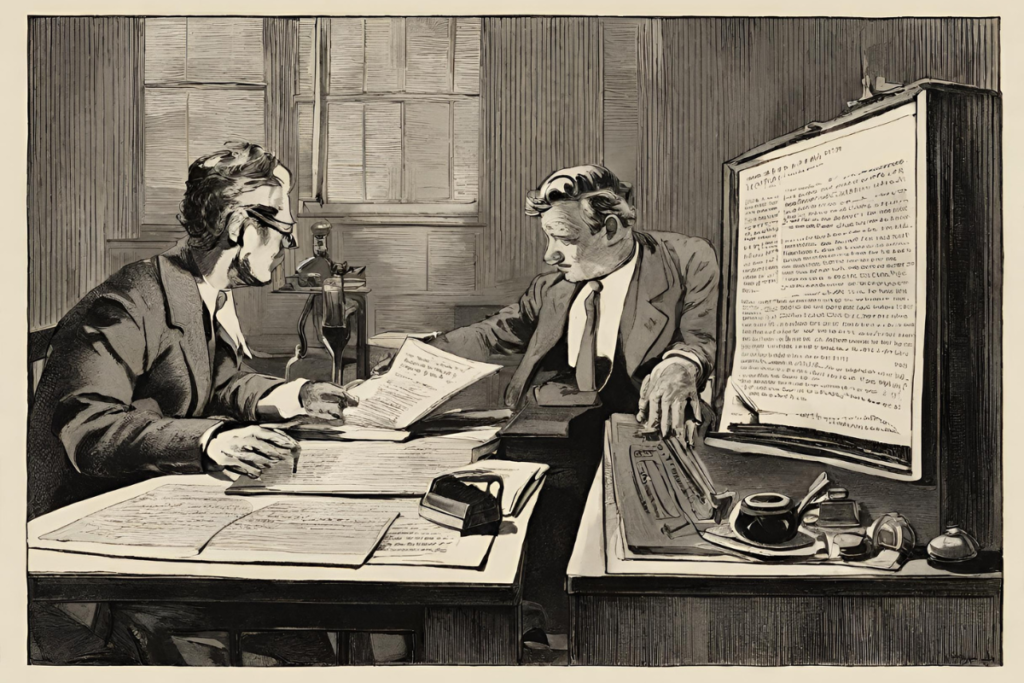
In the 20th century, content creation boomed with the introduction of television and personal computers. Later on, the digital revolution took place, leading to the widespread use of the internet. This changed how content was created:
- Democratization: The internet empowered anyone with a computer and an internet connection to become a content creator. This shift led to a surge in blogs, online communities, and social media platforms, providing individuals with platforms to share their voices and perspectives.
- Rise of Specialized Creators: The digital age witnessed the rise of various content creator specializations, including web developers, graphic designers, video editors, and social media influencers. These individuals catered to the diverse content needs of the growing digital audience.
After the internet, AI is becoming a significant part of our daily lives, including content creation, image generation, Video editing and much more. But before delving into Artificial Intelligence tools, let’s first understand human content creators.
Understanding Human Content Creators
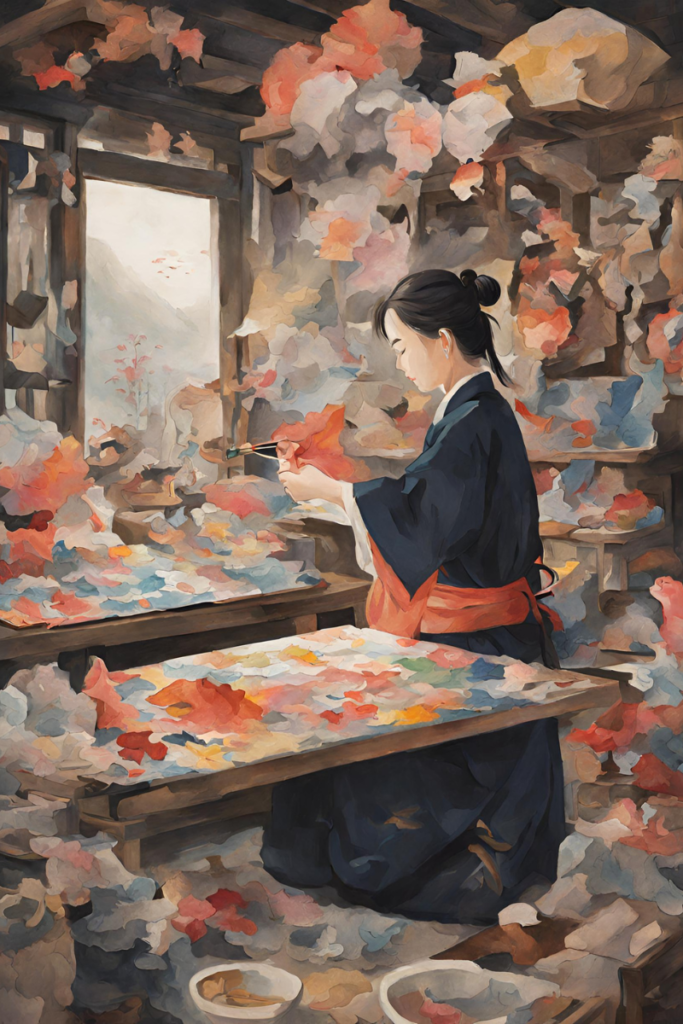
Humans can take on various roles as content creators. The main goal of these content creators is to make interesting and useful content that people enjoy, talk about, and share to spread knowledge. The names we use for content creators include writers, journalists, editors, bloggers, social media influencers, and multimedia storytellers. Together, their goal is to create compelling, relevant, and valuable content that connects with audiences, sparks conversations, and shares knowledge.
The Skills and Expertise
Human content creators have a diverse set of skills, including excellent writing, adept editing, and a deep understanding of storytelling. They are also skilled in various communication mediums. Moreover, they are knowledgeable about Content hooks, human-specific examples, content distribution channels, and audience engagement tactics. This enables them to create content that not only informs but also captivates and inspires.
Diverse Content Creation
The scope of content creation by human creators is expansive, spanning various formats such as:
- Written Content: This includes thought-provoking articles, insightful blog posts, engaging website copy, informative product descriptions, and in-depth journalistic pieces covering diverse topics.
- Visual and Multimedia Content: From captivating photography and compelling infographics to immersive video content and interactive multimedia experiences, human creators use visual storytelling to convey powerful messages.
- Social Media Engagement: Adept at navigating social media platforms, human content creators craft engaging posts, foster community interaction, and create impactful social media campaigns.
- Podcasts and Audio Content: Using the art of storytelling and conversation, human creators produce compelling audio content that resonates with audiences, educates, and entertains.
The Human Touch in Content Creation
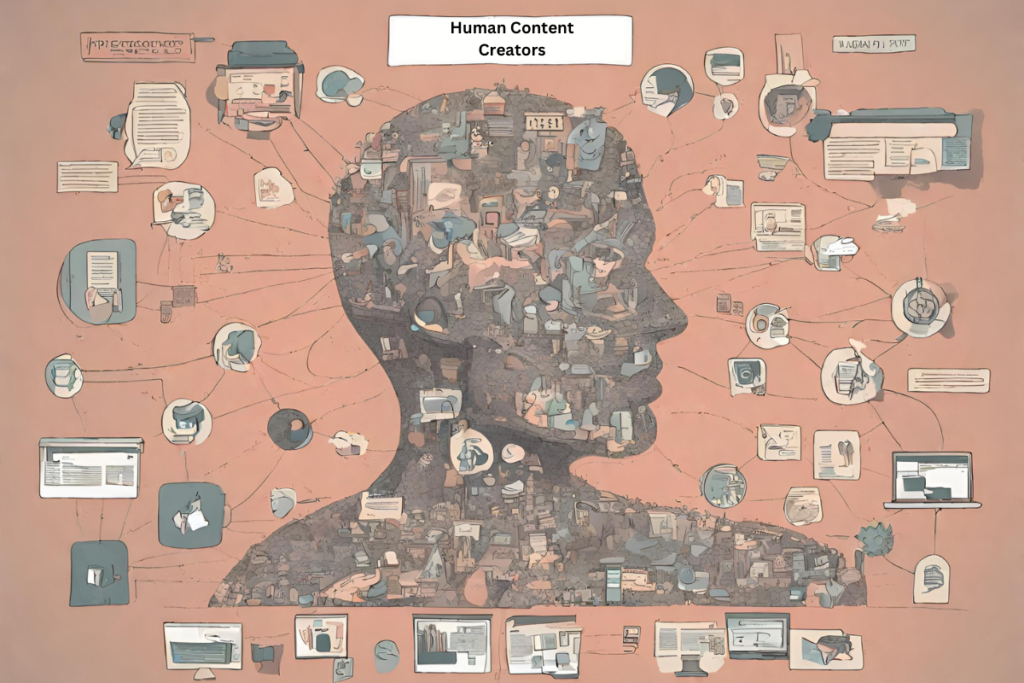
Human content creators distinguish themselves by infusing their work with a unique human touch. Their ability to empathize, understand diverse perspectives, and evoke emotional responses sets them apart. Utilizing creativity and emotional intelligence, they produce content that establishes authentic connections with audiences, prompting discussions, and inspiring thoughtful responses.
Authenticity and Originality
Human content creators strive to produce authentic and original content that reflects their unique voice, perspective, and expertise. Whether it’s through thought-provoking articles, insightful blog posts, engaging website copy, or artistic expressions, their work is a testament to their individuality and creativity. In an era defined by rapid technological advancements and evolving content consumption patterns, human content creators exhibit a remarkable ability to adapt to change. They embrace new tools, platforms, and mediums, leveraging them to amplify their storytelling and reach wider audiences.
The Future of Human Content Creation
As technology advances, people who create content are still crucial. They understand human experiences and use creativity to shape content. Content creators tell stories, using creativity and empathy to connect with audiences. Their dedication to authenticity and engagement is essential in the digital age.
But there’s more to the story. Artificial Intelligence (AI) is a significant change. While it can’t fully replace human creativity, AI provides powerful tools for content generation, making workflows smoother and offering data-driven insights for better content strategies. Combining AI with human creativity has the potential for efficient and emotionally resonant content creation.
Enter the Age of AI Content Creation
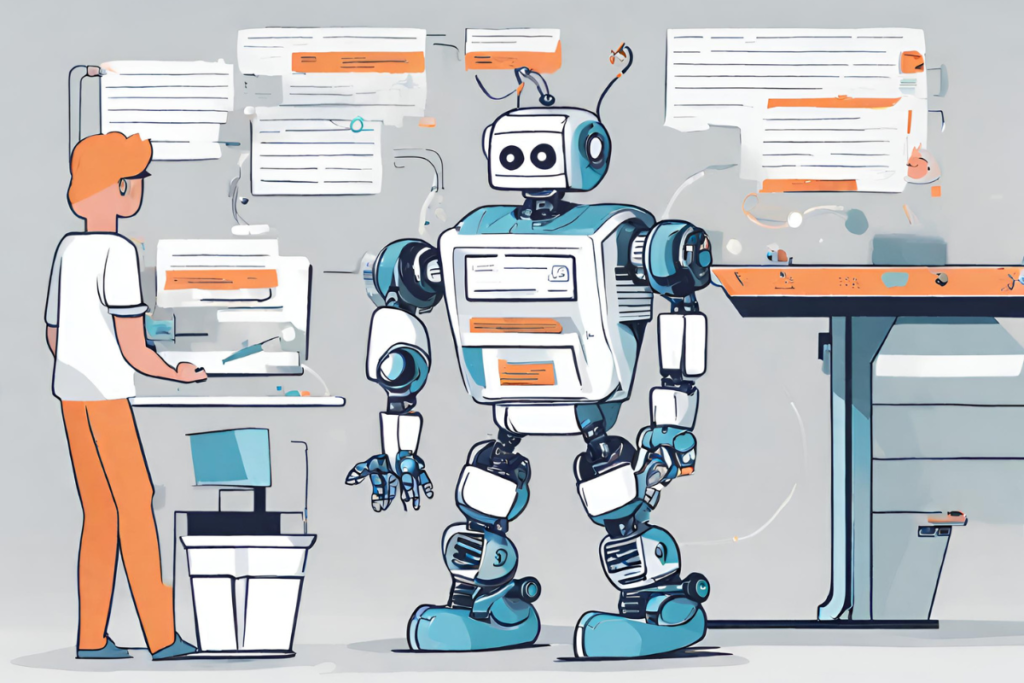
AI technology is changing how we create content. AI content generation tools like Zomani uses complex Artificial Intelligence (AI) algorithms and learning models to write. This has some benefits:
- Faster content creation: AI tools can make content much quicker than humans, so you can create more.
- Learning from data: AI looks at big sets of data to find trends. This helps make content strategies and creations.
- Saves money for some jobs: AI tools are a cheaper choice to generate various types of content including blogs, product descriptions and many more.
The Types of Content AI Can Generate
While AI technology offers a powerful assist, it’s important to understand its limitations. Currently, AI tools excel in generating certain types of content:
- Short-form content: AI can handle tasks like generating product descriptions, social media posts, or basic article summaries efficiently.
- Informational content: Summarizing news reports, generating financial reports, or creating data-heavy articles are tasks where AI can showcase its strengths.
- Marketing and advertising copy: Email campaigns, landing pages, and basic ad slogans can be effectively created with the help of AI tools.
- Image Generation: AI Image generators like Zomani can create exceptionally resembling photos of the promt you provide it to.
- Chat Capabilities: Some AI tools like chatbots are really good at conversations like humans but still lacks interacting capabilities and emotions.
- Creative Content (with limitations): While AI can assist with brainstorming ideas, generating basic outlines, or even producing simple poems or scripts, it cannot fully replicate the nuanced creativity and emotional depth of human writers.
AI: A Collaborative Tool, Not a Replacement

A simple example of AI is robotic vacuums. They’re helpful, time-saving, and offer various benefits, yet they don’t fulfill all our cleaning needs. Similar to robotic vacuums, AI content creators has strengths, but it can’t replace human content creators. AI lacks the deep understanding and capability to produce genuinely original and impactful content like human writers. Humans play a crucial role in providing creative direction, ensuring accuracy, and adding the vital human touch that resonates with audiences.
The future of content creation involves a teamwork approach, where AI content creators supports human writers in different parts of the process. By combining human creativity with AI efficiency, content creators can make high-quality, engaging content on a large scale. This transformative collaboration opens exciting possibilities, allowing us to explore new avenues and connect more with our audiences.
FAQs
1. What is the role of human content creators in the evolving landscape of content creation?
Human content creators play a crucial role in shaping engaging and informative narratives across various platforms. Their expertise, creativity, and understanding of human emotions contribute to captivating audiences and driving meaningful engagement.
2. How has content creation evolved throughout history, from cave paintings to the digital age?
Content creation has evolved from cave paintings and ancient texts to the digital age. The invention of the printing press, the rise of professional writers, and the digital revolution have transformed how content is created and disseminated.
3. What skills and expertise do human content creators possess in creating compelling content?
Human content creators have diverse skills, including excellent writing, editing, and storytelling. They are knowledgeable about content hooks, use human-specific examples, understand content distribution channels, and employ audience engagement tactics.
4. How does AI technology contribute to content creation, and what are its limitations?
AI technology, like Zomani, speeds up content creation, analyzes data for trends, and offers cost-effective solutions for various content types. However, its strengths lie in short-form and informational content, marketing copy, and chat capabilities, with limitations in creative content compared to human writers.
5. What is the future of content creation, considering the collaboration between human creativity and AI efficiency?
The future involves a collaborative approach where AI content creators support human writers. While AI offers efficiency and benefits, human content creators bring creativity, originality, and emotional depth. This collaboration allows for high-quality, engaging content creation on a large scale, opening exciting possibilities for connecting with audiences.




